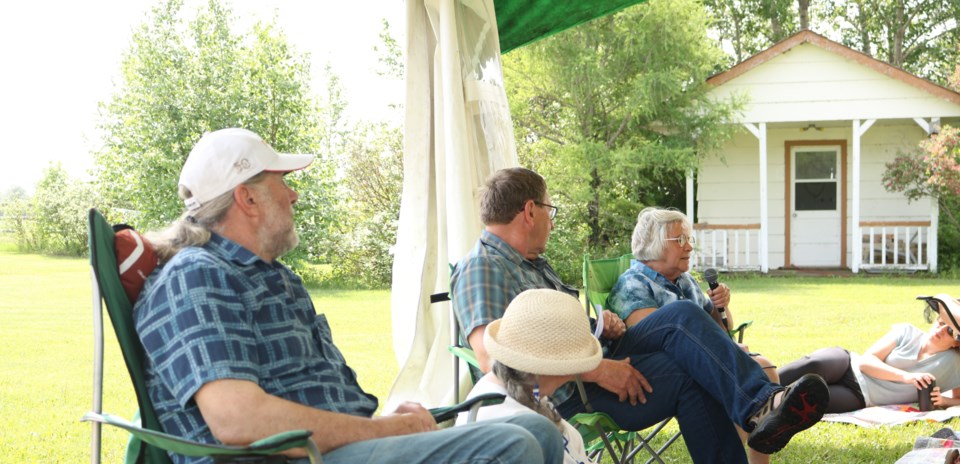YORKTON - Morley and Paula Maier live on a farm south of Yorkton.
Recently they chose to add their farm to the Treaty Land Sharing Network.
Saturday the couple hosted a gathering to share with neighbours about what the network is, and why they joined.
The TLSN “is a group of farmers, ranchers, and other landholders who have come together to begin the crucial work of honouring Treaties,” details treatylandsharingnetwork.ca. “In the spirit of sharing the land, we welcome First Nations and Métis people to access the land that we farm to practice their way of life. We are committed to implementing the Treaty relationship, engaging in ongoing learning together as we practice being Treaty people, and establishing a different way forward for rural Saskatchewan . . .
“Members of the Treaty Land Sharing Network welcome Indigenous people to gather plants and medicines, hunt, and practice ceremony on the land that we farm. We believe this is a critical step toward upholding our responsibilities as Treaty people. The Treaty Land Sharing Network currently includes 46 locations and over 20,000 acres across Treaty 4 and Treaty 6. Our goal is to continue to expand the network of land that can be accessed, and we are always looking for new members.”
When it came to reasons to join the Network Morley Maier said while there were “lots of good reasons,” it came down to the short answer “we know our history . . . It’s not a good history.
“We don’t like it. We don’t want to be part of it anymore.”
Maier said being near the Metis community at Crescent Lake and the Little Bone Indian Reserve is part of it.
“This area has a lot of history and much of it is not good history,” he said.
For example it was in 1926 Chief Kinistino was beaten by four RCMP, and their tents torn down, as they were to be moved to the Qu’Appelle Valley.
And in a 1906 Manitoba Free Press article the Saltcoats community was praised for how well the settlers were doing including “driving the red from their idle haunts,” said Maier.
Joining the networks is about working for something better today, with being part of the effort doing some of the ongoing work of reconciliation, said Maier.
Putting up the signs that their land was accessible was a message, that “whatever history was it can be and should be something better for the future,” said Maier.
Maier said he wasn’t suggesting neighbours should sign up, but it an option to consider.
In offering an opening prayer and remarks Ross Cadotte said the network is an important step.
“It opens the door . . . to what the original intent of treaties was,” he said.
Cadotte said access to the land to hunt and collect plants was part of treaty because it was a way to ensure they could feed their families, to put food on the table, and that remains important today.
Cadotte said the network takes a step back to honouring the treaties cooperatively.
“We need to create this kind of alliance,” he said, adding he credits those involved for an important effort. “. . . Today you are undertaking a very honourable thing . . . We acknowledge you for your courage to stand up against the norm.”
In establishing efforts such as the network young people can hopefully have a better tomorrow, said Cadotte.
The Network is about forging a renewed partnership suggested member Mary Smiley.
“Sharing does bring new opportunities – new relationships,” she said.
Smiley outlined the key principles which she said focus on effort to honour treaty obligations. They included;
* Indigenous Peoples hold both Inherent and Treaty Rights to move freely throughout these territories and to use and steward the plants and animals.
* Access to land is critical for the cultural survival and livelihood of Indigenous people.
* As Treaty people, settlers have a responsibility to share the land they currently steward and work to actively remove barriers to safe access.
* It is critical for settlers to engage in ongoing learning together to deepen their practice of the Treaty relationship, even when this work requires them to set aside their own ways of doing things, challenge their perceptions, and feel uncomfortable.






